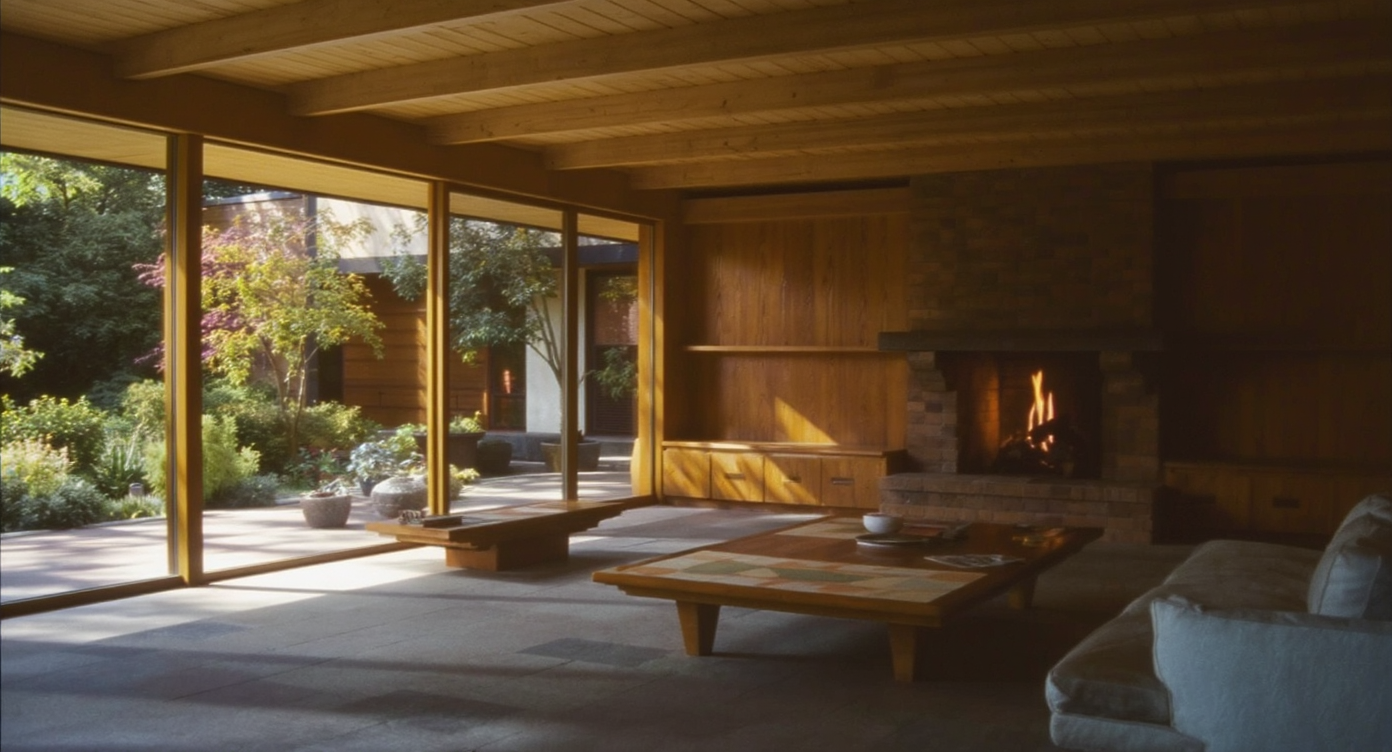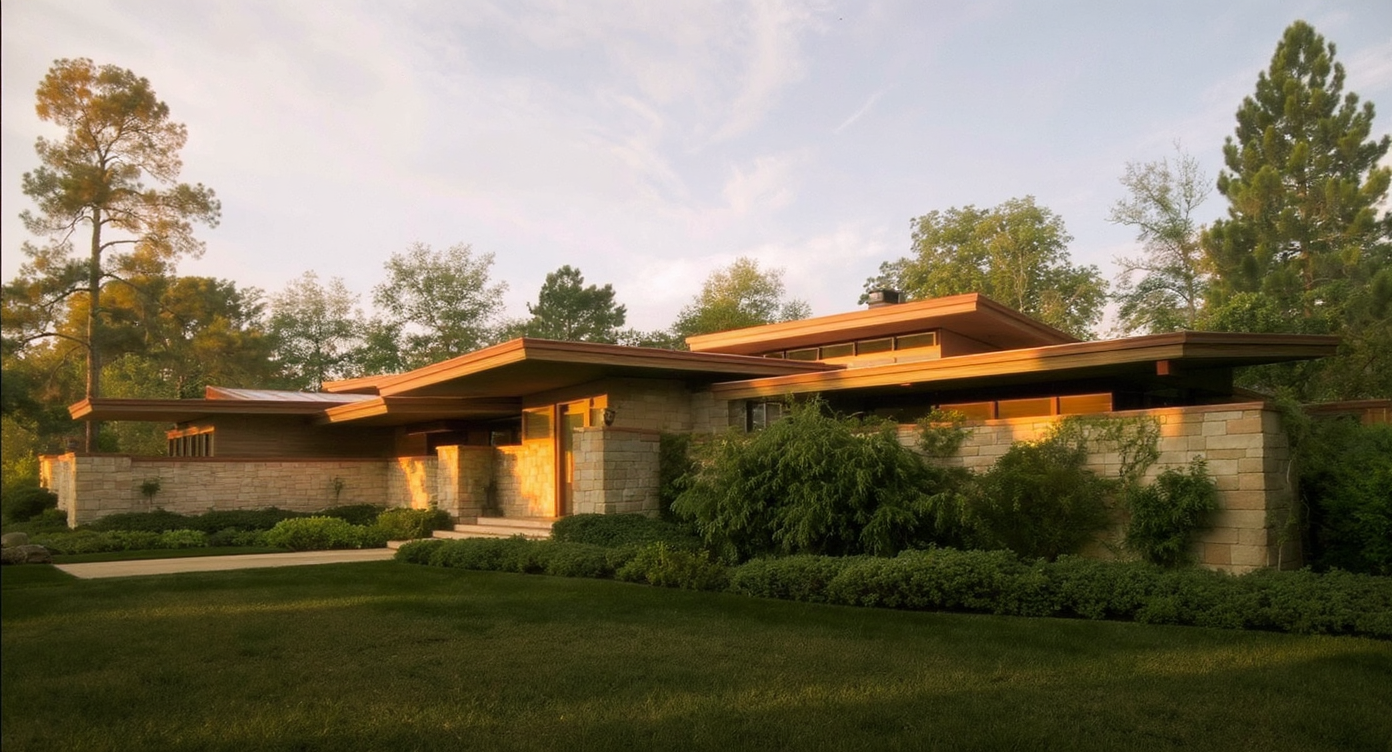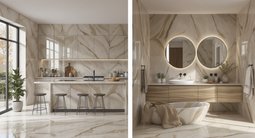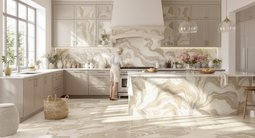TL;DR
Rare Frank Lloyd Wright homes now range from roughly $1.2 million to $6 million, and they sell on story, stewardship, and precise marketing. If you’re wondering how to buy a Frank Lloyd Wright home or position one to sell, focus on provenance, realistic restoration budgets, and listing strategies that honor the architecture while reaching a national buyer pool.
Architectural Real Estate 2025: How to Price and Preserve Frank Lloyd Wright Homes Without Losing Their Soul

Wright’s Usonian interiors blend craftsmanship with nature through light, materials, and geometry.
Meta: Wright homes are trending with buyers; here’s how to price, market, and preserve them without losing their soul.
Luxury buyers and preservation-minded clients are chasing a finite supply of Frank Lloyd Wright homes, and the market is responding. A rare Usonian in Jackson, Mississippi just surfaced at $2.5 million, a Prairie-style residence in Indiana is asking about $1.2 million, and one of Wright’s largest, Tirranna in Connecticut, recently closed at $6 million. The spread tells you everything about this niche: place, provenance, condition, and story shape value.
For sellers and agents, architect-designed real estate is a category of its own. For buyers, these properties are equal parts home and museum-grade craft. In both cases, the path to success is clear: respect the design DNA, prepare for specialized due diligence, and market the listing like a once-in-a-generation work of art.
The Playbook: How to Buy or Market an Architecturally Significant Home
Architectural real estate succeeds when marketing and maintenance meet; agents often report that well-presented historic listings attract 30% to 50% more online engagement and sell faster when the story is told clearly.
- Verify provenance and documentation. For any Frank Lloyd Wright home, gather original drawings, correspondence, and prior surveys. Buyers of historic homes for sale should request a chain of ownership and any conservation easements; sellers should package this upfront to reduce surprises.
- Budget for stewardship, not just style. Preservation-savvy inspectors suggest earmarking 10% to 20% of purchase price for phased restoration and systems upgrades, especially for specialty materials like red cypress, art glass, copper, and custom masonry.
- Price with comps—then widen the lens. Real estate marketing for unique properties requires regional and national comps from similar architect homes. Market analysts suggest setting a launch price 3% to 7% within your valuation range to generate momentum without signaling distress.
- Tell the design story in plain language. Listing strategies that highlight the plan, materials, and siting convert better. Use captions and alt text that name key features: “Alt text: Usonian living room with cypress paneling, clerestory windows, and copper roofline.”
- Show what’s original—and what’s reversible. Buyers expect clarity on updates. Agents often advise labeling improvements as reversible (lighting, appliances) or non-reversible (windows, structural changes). Transparency protects value.
- Use tech that clarifies, not conceals. Virtual tours and measured floor plans boost buyer confidence. Virtual staging for real estate listings should be restrained for historic homes; keep rooms minimally furnished, scale-accurate, and faithful to period palettes.
- Market beyond your ZIP code. Architecturally significant homes pull a national buyer pool. Expect 60 to 120 days to identify the right match in secondary markets; trophy properties in prime corridors can move faster with targeted PR and syndication.
Anecdote
During one open house for a Wright-designed property, an agent set out a simple binder: roof receipts, window restoration invoices, HVAC dates, and a one-page history written by the prior owner. Multiple buyers later said that binder tipped them from browsers to bidders. Another seller commissioned dawn and dusk photos to capture how the overhangs managed light across seasons; the album became the most-shared asset in the listing, drawing qualified out-of-state tours within the first week.
Common Mistakes That Derail Historic Home Sales
“Over-correcting” a Wright home can erase six figures of value, agents caution.
- Over-renovating interiors. Replacing original millwork, art glass, or built-ins with trend-driven finishes often cuts value by 10% to 25%. Fix: restore, don’t reinvent; upgrade systems invisibly.
- Misleading virtual staging. Adding decor that blocks window geometry or inflates room scale leads to buyer distrust. Fix: keep staging minimal, mobile-first, and clearly labeled; buyers should recognize the spaces.
- Local-only marketing. Relying on neighborhood comps and regional MLS exposure narrows reach. Fix: target preservation groups, architecturally minded publications, and high-net-worth buyer channels.
- Inadequate disclosure. Skipping roof life, mechanical ages, or moisture history slows deals. Fix: pre-listing inspections and a digital data room cut renegotiation risk.
- Weak visuals. Dark, skewed property photos can halve click-through. Fix: shoot at the right sun angle; capture elevations, details, and site plan context.
Pro Tips from the Field
Homes with clear, honest storytelling and crisp listing visuals routinely command a premium, marketers say.
- Stage for mobile first. Over 70% of listing views happen on phones; design rooms with low-profile furnishings so the architecture reads at thumbnail size.
- Lead with the plan. Post a measured floor plan and a short explainer: “solar hemicycle for passive sun,” “Usonian grid with parallelogram module,” etc. This answers the top buyer question—how the house lives.
- Document maintenance as a value driver. A one-page timeline of roof, HVAC, and restoration milestones can add negotiating leverage equal to 1% to 3% of price.
- Don’t hide patina—contextualize it. Minor wear on original wood tells a story. Pair detail photos with captions like, “Original cypress, refinished 2010; conservation-grade oil finish.”
- Use light like a feature. Schedule photography to show how the architecture manages sun. Include a caption: “Alt text: Hemicycle dining room illuminated by south winter light.”
- Offer buyer resources. Share insurance contacts for historic homes, preservation tax credit info, and a list of craftspeople familiar with the property.
Mini Case Studies: What Recent Wright Listings Teach Us
Wright properties prove that rarity, restoration quality, and siting shape price as much as square footage.
- Usonian purity in Mississippi (asking ~$2.5M). A hillside residence designed in the late 1940s showcases a parallelogram grid, original copper roof, and warm Heart Tidewater Red Cypress. Decades of careful restoration by an architect-owner illustrate the “stewardship premium”—buyers pay for authenticity plus documented care. Listing takeaway: lead with materials, geometry, and the site’s water-and-woods drama.
- Indiana’s Prairie-style icon (asking ~ $1.2M). An early-1900s home with pronounced horizontals, deep eaves, and more than sixty pieces of art glass demonstrates how thoughtful updates can coexist with heritage. Owners painstakingly restored windows and woodwork, then added modern conveniences like an EV charger. Marketing lesson: spell out what’s original, what’s upgraded, and why changes are reversible.
- Tirranna in Connecticut (closed near $6M). One of Wright’s largest residences, arranged in a solar hemicycle along water, traded below its initial ask after informed due diligence on restoration scope. The buyer pool analyzed long-term costs, then moved decisively. Pricing lesson: start aspirational but defensible, expect sophisticated inspections, and use clear pro formas to bridge the value conversation.
Visualization Scenario
Picture a buyer scrolling on a train: a thumbnail shows a cypress-lined living room, sunlight washing across a red concrete floor. The caption reads, “Usonian grid, original built-ins, copper roof—see floor plan.” One tap opens a measured plan, a 3D tour, and a short paragraph explaining how the geometry shapes daily life. The decision to book a flight happens right there.
FAQ
- How much does a Frank Lloyd Wright home cost in today’s market?
Frank Lloyd Wright home prices typically range from about $1 million to $6 million depending on location, condition, and provenance; rare, larger estates or museum-grade restorations can exceed that in top markets. - Is virtual staging worth it for historic real estate listings and architect-designed homes?
Virtual staging for real estate listings can help, but keep it minimal and true to scale; accurate, lightly furnished rooms increase clicks without misrepresenting the architecture. - What should I inspect before buying a Usonian home or a Frank Lloyd Wright house?
Focus on roof life (often copper or specialty membranes), moisture management, original wood and art glass condition, mechanical systems, and any easements or restrictions that affect renovations. - How do I market an architecturally significant property to out-of-state buyers?
Pair high-quality property photos with a measured floor plan, a 3D tour, and a concise design history; syndicate nationally and target preservation and architecture channels for reach. - Do historic designations or preservation easements limit how I can remodel a historic home?
Historic homes may have review processes for exterior changes and certain interiors; many updates are allowed if reversible and documented, so plan timelines and budgets accordingly.
From Property to Provenance: Honoring Wright’s Design DNA
Here’s the thing: a Frank Lloyd Wright home isn’t just a property; it’s a living document of American design. Whether you’re buying or listing, the path is the same—clarify the story, respect the materials, and market to the broadest band of people who will actually care. Do that, and you’re not just transacting real estate. You’re placing a work of art with its next steward.
.svg)

.svg)
.jpg)













.png)